Fragments with Patricia Kopatchinskaja
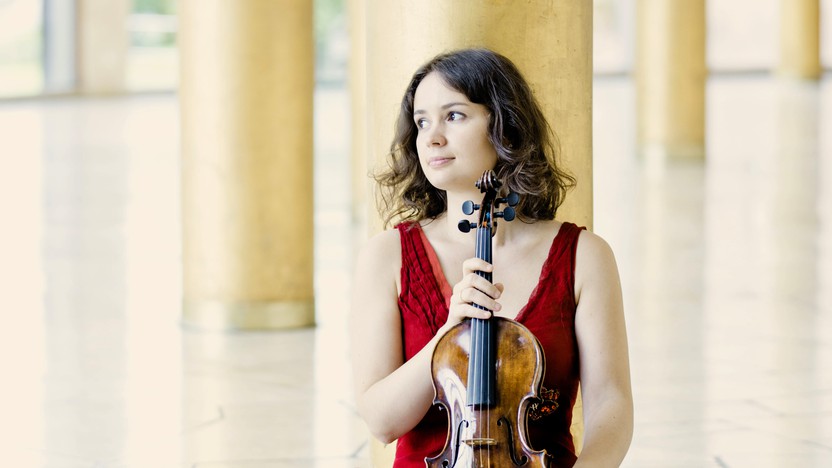

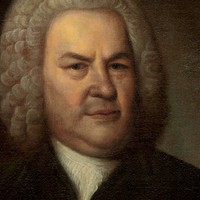
By the end of Bach’s life, formal polyphony—fugues, canons and the like—had fallen out of fashion. While other composers, including his sons, developed new homophonic styles (i.e., music with one recognizable melody line), Bach spent his final decade working out the most sophisticated counterpoint imaginable. He reached new heights in the Goldberg Variations and the collection of fugues and canons known as The Musical Offering, but his most rigorous undertaking of all was The Art of Fugue. He completed an initial version in the early 1740s, and he was working to expand and revise it at the end of his life, at a time when his failing eyesight forced him to dictate compositions to his sons or other scribes.
The Art of Fugue, in its final form, comprises 14 fugues and four canons, all utilizing the same theme. All that is except for the Contrapunctus XIV that breaks off midstream, and this is where the mystery lies. It seems clear that the final fugue was on its way to summing up the entire cycle, and truly the very art of fugue, with an appearance of the unifying theme as the last of four superimposed subjects, in what would have been a dizzying technical feat. But the score only gets through the third subject (which happens to be Bach’s musical signature, the notes B-flat – A – C – B-natural, or as spelled in German, B – A – C – H), never reaching the pivotal fourth subject. The romanticized notion that Bach died with pen in hand does not gibe with the known facts, leaving no clear explanation for the fugue’s truncated state. Did Bach actually finish the fugue on another page, only to have it lost after his death? Did he leave it unfinished on purpose, a challenge and provocation for future composers to deduce the contrapuntal solution? (Plenty have taken the bait.) Another unsettled matter is what instrument or ensemble Bach had in mind for the unlabeled staves. This performance assigns the lines to stringed instruments, whereas others have rendered the music on a harpsichord or organ.
The Art of Fugue remains riddled with open questions. Bach’s son C.P.E., who oversaw the posthumous publication in 1751, simply lopped off Contrapunctus XIV at an unresolved half-cadence—the musical equivalent of a question mark. The other approach is to honor the original manuscript and simply trail off where the notes end mid-phrase, like a sonic ellipsis…
Aaron Grad ©2017
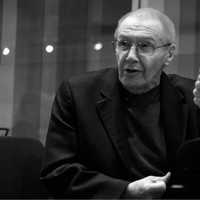
Born in Romania to Hungarian parents, György Kurtág moved in 1946 to Budapest, where he followed a musical path blazed earlier in the century by Béla Bartók. It was not until 1957, during a year of study in Paris, that Kurtág encountered the modern styles that had failed to penetrate the “Iron Curtain.” He took lessons from Messiaen and Milhaud, and he also transcribed many of Webern’s scores, gleaning that composer’s gifts of concision while mostly rejecting the underlying twelve-tone orthodoxy.
Kurtág reached an impasse in the late 1960s, and he only found his way back to a productive method of composing after he was invited to contribute to a collection of piano pieces for children in 1973. Ever since, the short and whimsical piano works he has collected under the title Játékok (Games)—spanning nine published volumes as of 2017—have formed the core of his output, generating methods and raw material that inform all of his larger works.
Aaron Grad ©2017
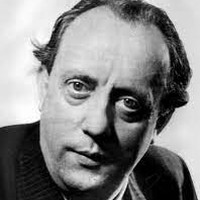
Like many young German composers in the aftermath of World War I, Karl Amadeus Hartmann wrote sassy, ironic music that exploded tired Romantic conventions and jabbed at modern politics and society. Such cultural activism flourished during the freewheeling days of the Weimar Republic, but the climate shifted with the Nazi takeover in 1933. Many composers went into exile, including Kurt Weill and Hanns Eisler, who both settled in the United States. Others ended up in prison or worse; Erwin Schulhoff, to name one great talent, died in a concentration camp. Hartmann was one of the very few anti-fascist composers who survived World War II without capitulating to the Nazis or fleeing. He prevented performances of his music in Germany, but he continued to compose new works that drew upon Hebrew melodies, Communist songs and even banned scores by his compatriots. It was a brave and perhaps foolhardy resistance, but, as Hartmann himself wrote, “No artist, unless wishing himself written off to nihilism, can sidestep his commitment to humanity.”
Hartmann wrote eight symphonies, a major opera and numerous other works, but he is best known for a single composition from the early months of World War II. Horrified by the annexation of Czechoslovakia in 1939, he recorded his reaction in a concert piece for violin and strings originally titled Music for Mourning, renamed Concerto funebre upon its revision in 1959. He managed to smuggle the score out of Germany, and it received its first performance in Switzerland in February 1940.
The violin’s opening theme appropriates an old Hussite chorale with origins in the 15th-century Bohemian resistance to the Roman Catholic Church. (In more recent history, that tune had become a symbol of Czech national pride, quoted in pieces by Smetana and Dvořák.) The short chorale introduction connects directly to the halting and anguished Adagio movement, with the solo violin often left alone in bleak isolation. The Allegro di molto section is ferocious and outspoken, its Slavic contours wrapped in Expressionist dissonances. The energy settles in preparation for the hushed Choral movement, with music that is somber but not hopeless. The ending squares well with a statement Hartmann made about another of his Nazi-era pieces: “If you show the world its reflection so that it recognizes its horrible face, it might change its mind one day. In spite of all the political thunderclouds, I do believe in a better future.”
Aaron Grad ©2017
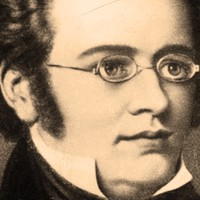
In the middle of the 14th century, the Bubonic plague, also known as the Black Death, eradicated half of the population in Europe. From about this time, there appeared representations of the "Dance of Death", often on the walls of churches or in cemeteries, of a human being meeting and dancing with a personification of death. The message that death touches us all, no matter what station of life, was portrayed through a series of pictures that reflected the hierarchy of society, starting with the pope, and then going down from emperor, cardinal, king, clergyman, young man, maiden, child and so on. Very often the individual pictures were accompanied by short verses in four lines, and as a rule, the human being says something to death and then death responds. These verses often included some humor or even social criticism.
The poem "Der Tod und das Mädchen" (1785) by Matthias Claudius (1740-1815) is clearly an emanation of this medieval tradition. It even takes over the form of the ancient verses with a dialogue between victim and death.
Das Mädchen: Vorüber! Ach, vorüber! Geh, wilder Knochenmann! Ich bin noch jung! Geh, lieber, Und rühre mich nicht an. Und rühre mich nicht an.
Der Tod: Gib deine Hand, du schön und zart Gebild! Bin Freund, und komme nicht, zu strafen. Sei gutes Muts! ich bin nicht wild, Sollst sanft in meinen Armen schlafen!
The Maiden: Pass me by! Oh, pass me by! Go, fierce man of bones! I am still young! Go, my dear, And do not touch me. And do not touch me.
Death: Give me your hand, you beautiful and tender form! I am a friend, and come not to punish. Be of good cheer! I am not fierce, Softly shall you sleep in my arms!
Such consoling and even seducing words will still give chilling shivers, coming from a skeleton that will take you to your grave.
Franz Schubert set this poem to music in his Lied, "Der Tod und das Mädchen" (1817). After the agitated and rhythmically irregular exclamation by the terrorized maiden, the rhythm becomes that of a solemn Pavan just in the moment when she calls him "dear". The Pavan, a dignified and formal Renaissance dance, was often danced by the king and was also used in music of mourning. In the context of Schubert’s Lied, the Pavan rhythm expresses the sovereign power of death over the surrendering human creature.
This same material reappears in Franz Schubert’s Quartet No.14 in D Minor, Death and the Maiden (1824). The variations of the slow movement explore different facets of the Pavan part of the Lied: anxiety, menace and anger. The variation with the solo cello can be understood as the tender seduction of a shy virgin.
The first movement however takes up the atmosphere of the agitated first part of the Lied; terror strikes from the first beat, death appears from nowhere and repeated triplets put everything into excited doubt.
The Scherzo can then be seen as the death dance. The trio, however, is a caressing, even erotic waltz, where the girl maybe still feels sad longings for life. Or is the longing already for death? During the repetition of the Scherzo, the maiden surrenders to the increasingly violent dance.
The final movement is a furious, unreal and ghastly tarantella leading into another world.
Schubert wrote this quartet in a very difficult time. The failure of his operas, his poverty, his miserable and declining state of health, the absence of his best friends and the anguish of disappointed love drove him to despair. In a letter to his friend Leopold Kupelwieser, he wrote:
"I feel myself the most unhappy, most wretched being in the world…'My peace is gone, my heart is heavy; I shall find it never, and never more;' I can say daily, for every night when I go to sleep, I hope that I may never wake again, and every morning renews the grief of yesterday..."
Clearly we have here the idea of death as friend and redeemer.
To open our ears to this musical exploration, we have included a prelude and interludes between each of the Schubert movements. We begin with a meditation: an ancient Byzantine chant of Psalm 140 (“Lord, I have cried unto thee, hear me”). Of course, we have to include Schubert’s original song, here in an arrangement by Michi Wiancko. We echo the Pavan in Schubert’s 2nd movement with one of John Dowland's Pavanes from Seaven Teares. Before the Finale, we refresh our ears with unsettling works by one of the greatest living composers, György Kurtág. This project with the SPCO has enlarged our dimensions of hearing and together we approached the music as a soloist would, individually, but all souls mystically linked to an intuitive whole that does not need a conductor
Patricia Kopatchinskaja ©2016

Born in Romania to Hungarian parents, György Kurtág moved in 1946 to Budapest, where he followed a musical path blazed earlier in the century by Béla Bartók. It was not until 1957, during a year of study in Paris, that Kurtág encountered the modern styles that had failed to penetrate the “Iron Curtain.” He took lessons from Messiaen and Milhaud, and he also transcribed many of Webern’s scores, gleaning that composer’s gifts of concision while mostly rejecting the underlying twelve-tone orthodoxy.
Kurtág reached an impasse in the late 1960s, and he only found his way back to a productive method of composing after he was invited to contribute to a collection of piano pieces for children in 1973. Ever since, the short and whimsical piano works he has collected under the title Játékok (Games)—spanning nine published volumes as of 2017—have formed the core of his output, generating methods and raw material that inform all of his larger works.
Aaron Grad ©2017

Wolfgang Amadeus Mozart wrote his three final symphonies in the span of eight weeks during the cash-strapped summer of 1788, when he was reduced to pleading with friends for loans, moving his growing family to the suburbs, and pursuing dead-end leads for his music. Whatever opportunity prompted the symphonies seems not to have panned out, and he probably didn’t hear all three before he died. He did revisit the G-minor symphony at some later point to add clarinets and make other adjustments, suggesting that he found an audience for that one at least.
The Symphony No. 40 in G Minor was only the second example that Mozart set in a minor key, and it was a world apart from the Symphony No. 25 that he wrote as a seventeen-year-old. This bigger, bolder, proto-Romantic symphony begins with a peculiar and essential quirk of phrasing that assigns the violas to quiver through one measure of bare accompaniment. When the violins enter a moment later with a theme that sighs three times before leaping up, there is a subtle rub between what our ears hear as the strong beat and the underlying architecture of the phrase. The result is a persistent and restless feeling of propulsion, as if each phrase must scrabble forward to stay ahead of the surge.
The Andante second movement is the only portion of the symphony that moves away from the turbulence of G-minor, and even here patterns of hiccupping rhythms and delayed resolutions recall the stormy first movement. The Menuetto is unusually grave for the portion of a symphony that often serves as a light diversion, with respite only coming in the contrasting trio section. The finale, with its heated dialogue of soft and loud phrases, embodies the passion and drama that Mozart honed on the operatic stage, most recently in Don Giovanni.
Aaron Grad ©2025
Get driving directions and find nearby parking.
Find dining options close to the venue.
View seating charts to find out where you'll be seating.
Get driving directions and find nearby parking.
Find dining options close to the venue.
View seating charts to find out where you'll be seating.
